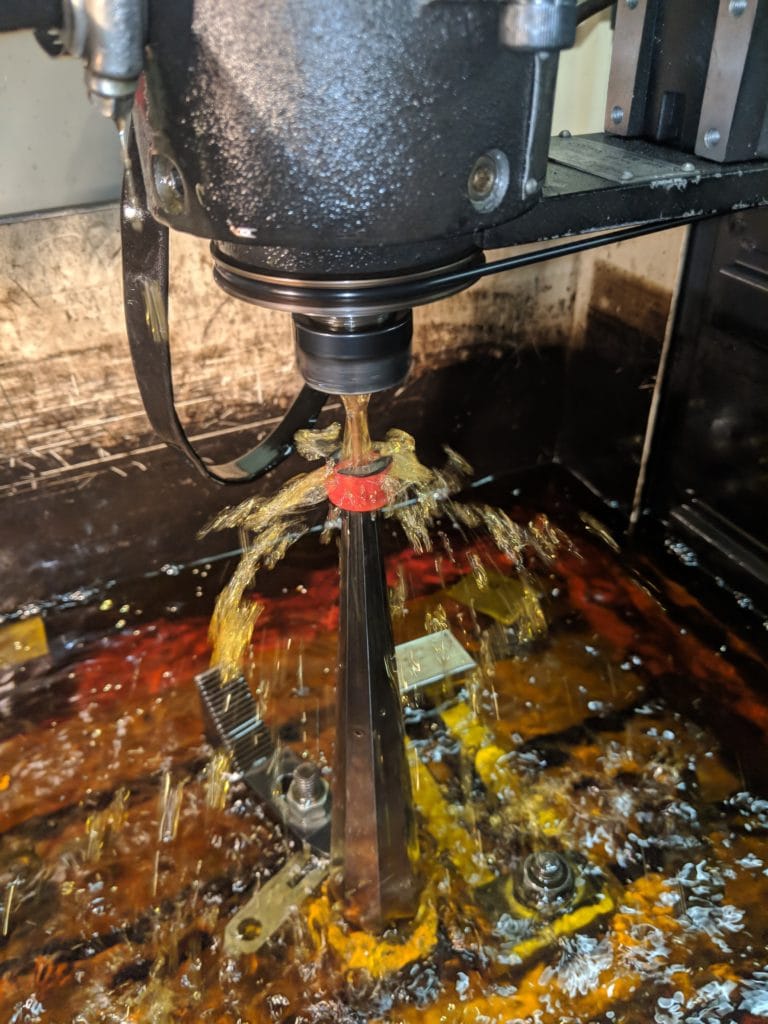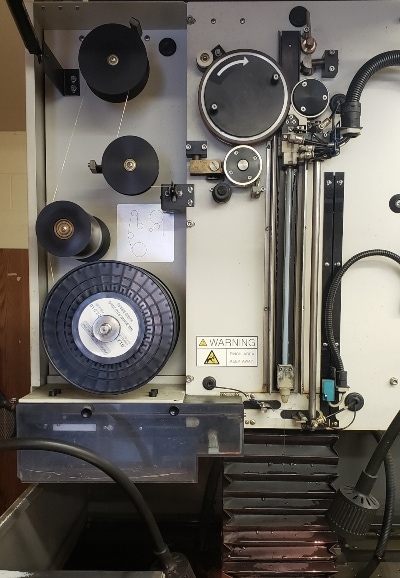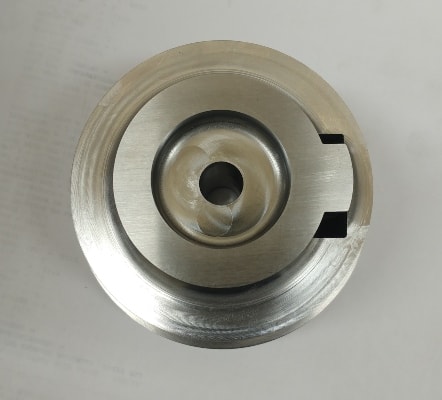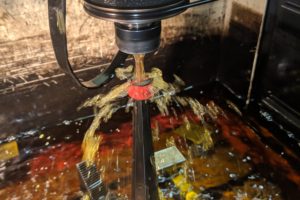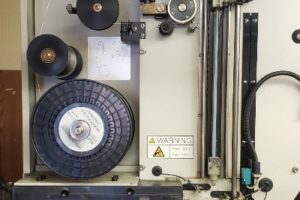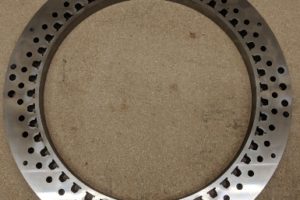There are a variety of ways to create shapes from materials for use in manufacturing, and each is best suited to specific applications.
Electrical discharge machining (EDM) is a manufacturing process where shapes are created via the use of electrical discharges without any need for pressure or other mechanical forces. This process only works on conductive materials.
The electrical current passes between electrodes through a dielectric liquid. An electrode melts or otherwise vaporizes material by creating a minuscule electric field in the fluid between the electrode and the workpiece. The closer the electrode gets to the workpiece, the more powerful this spark gap becomes. When the material is little more than a hair’s breadth away from the workpiece, material will be removed.
In this process, it’s essential that the workpiece does not make any contact with the tool itself.
Capabilities
There are three main types of EDM:
-
Wire
A continually moving thin wire, acting as an electrode, moves almost like a saw to make the cuts.
-
Ram
Also called die sinker EDM, this is used to create complex cavities for metal stamping and plastic injection molds.
-
Hole Popper
This technique is used to create precise holes in very hard materials, such as titanium, which are not easily cut with other methods.
Though typically used to make our own die components and prototypes in-house, we offer production wire EDM, as well. With ram EDM, we can create start holes, remove broken taps, and more.
Benefits
EDM has an incredible advantage over contact machining—it allows us to alter hardened materials. Without EDM, special tools are required to work with previously hardened materials, and the metals themselves have to be in a softened state. After the desired shape has been created in a softened metal, the part needs to be hardened, which at times can require more than one step or treatment.
The special tooling and softening/hardening processes are lengthy, adding significant time and expense to manufacturing while also leaving more room for error at various stages of the process. If the final heat treatments are not carefully controlled, the shape of the part may be altered, creating a sub-par or unusable part and leading to inconsistencies between individual items.
With EDM, we can work with hardened materials and exotic alloys while maintaining beautiful, professional finishes. Results can also be accurately reproduced with no need for supervision. EDM is ideal for complicated shapes, tight tolerances, small parts, and delicate materials (since there is no direct pressure from the tool on the material).
The EDM process is used in a variety of industries, including
- Aerospace
- Automobiles
- Electronics
- Die making
Though it may be somewhat slower than some other processes, there are certain results that simply can’t be achieved using other methods. For small production runs that extra time is negligible.
For more than 20 years, Thompson Outils Concept has been offering tool and die services for our customers in the automotive and medical industries. We’re committed to ongoing innovation and improvement to meet your needs in an ever-evolving and competitive marketplace.
For more information about our wire EDM capabilities and how we can put them to work for you, please contact us or request a quote.


